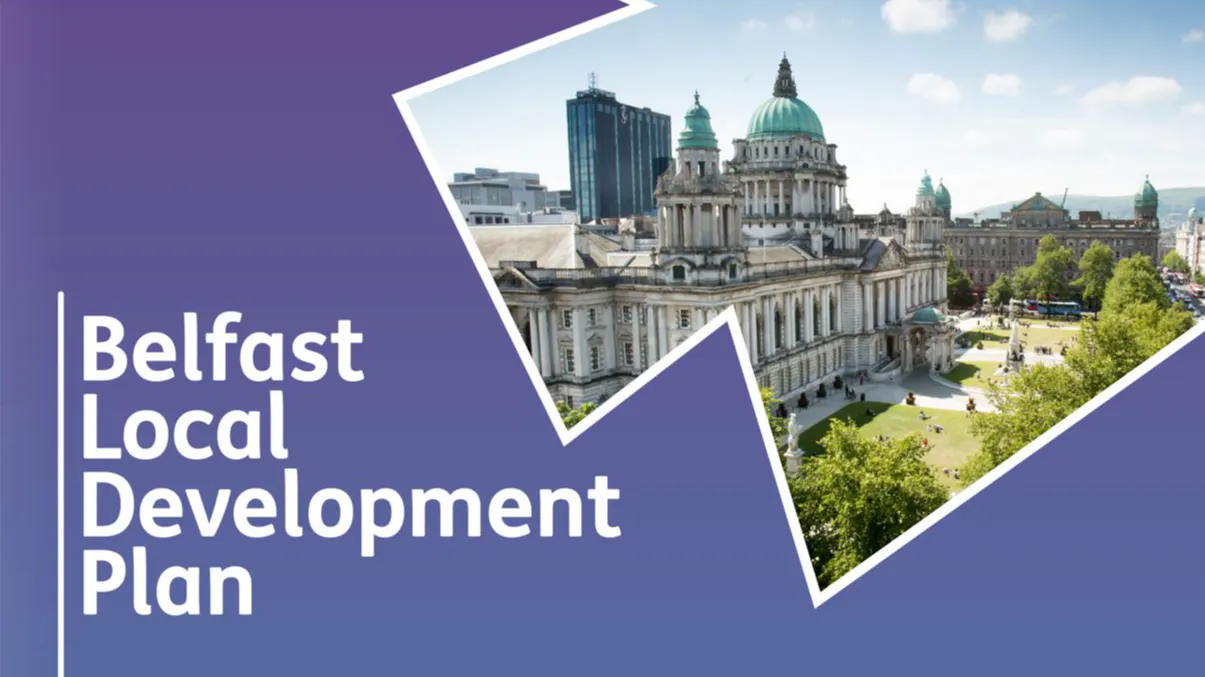Learn more about Belfast's Local Development Plan and your role in influencing change.

Belfast's thriving urban environment has the potential to be a haven for both people and wildlife, but it requires a well-crafted planning system to ensure the delicate balance is maintained. Belfast is entering a vital phase of its Local Development Plan process, with the next stage being the Local Planning Policy phase - a stage that will help to create a blueprint for a biodiverse, more climate-resilient city - but only if we get it right.
In this page, we explore why a good planning system is vital for protecting wildlife and fostering a resilient and, green city, and what you can do to help ensure it happens.
Why Does Belfast Need a Good Planning System for Wildlife and Resilience?
Biodiversity Protection: Belfast, like any other city, is home to a variety of habitats and species. A robust planning system helps safeguard these environments and the wildlife that inhabits them. From mudflats to veteran oak parklands, these spaces are the lifeblood of our city, providing refuge for birds, insects, and mammals.
Climate Resilience: As climate change accelerates, cities must adapt to new challenges. Effective planning can make Belfast more resilient by incorporating green infrastructure and sustainable development. Implementing these practices can mitigate the impact of flooding, reduce the urban heat island effect, and improve air quality.
The Key Components of a Good Planning System:
- Green Spaces: Well-planned green spaces and parks are not just for leisure; they are essential for biodiversity. They provide habitats for a multitude of species and are the city's lungs, purifying the air we breathe.
- Sustainable Development: Encouraging sustainable building practices ensures that new constructions minimize their impact on wildlife and the environment. Incorporating green roofs, rain gardens, and energy-efficient buildings are some solutions that can promote a harmonious coexistence between urbanization and nature.
- Wildlife Corridors: By preserving and creating wildlife corridors, we can help species move and adapt to a changing climate. These connective routes can be integrated into the city's layout.
- Community Engagement: An engaged community is the backbone of successful planning. Local residents, schools, and organizations can take part in tree planting, wildlife monitoring, and green initiatives, fostering a sense of shared responsibility.
What Can You Do to Support a Good Planning System?
- Stay Informed: Keep an eye on planning developments and voice your concerns or support for wildlife-friendly policies.
- Participate: Attend community meetings, public consultations, and support organizations dedicated to wildlife and sustainability.
- Educate: Learn about the native species in Belfast and the issues they face. Educate others about the importance of biodiversity and resilience.
- Advocate: Encourage your elected representatives to prioritize green planning policies and sustainable development.
- Respond: Respond to future consultations and our call to action.
A well-thought-out planning system is not just about blueprints and permits; it's about nurturing the heart and soul of Belfast, the intertwined ecosystem that sustains us, and the wildlife with which we share this city. By championing responsible planning and supporting a greener, more resilient Belfast, we can ensure that future generations enjoy the riches of our diverse and vibrant urban landscape.
For more information on the Local Development Plan process click here.